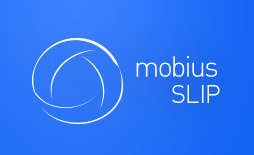The revolution of online education is redefining how and where students are learning.
From adding lectures to online platforms to offering math homework in 3-D and creating MOOCs that are free to everyone, colleges and universities are connecting new technology and the Internet to teach students in a fresh way.
Anyone headed to campus these days should get set for “a blended experience,” says David Leebron, president of Rice University and an advocate of online learning. While some college students will probably still have an entirely brick-and-mortar experience, Leebron says, other folks “may get their education entirely online.” Most will find themselves mixing traditional and virtual learning.
While some online platforms have been more successful than others, colleges and university have to learn how to integrate technology into their curriculums effectively. Change is inevitable, online learning will continue to grow and shape the undergraduate experience for students in the future.
A range of approaches, beyond MOOCs, is beginning to take place.
- Flipped Classroom: A popular model that is being used by instructors enables lectures to be heard at home and “homework” to be done in class. At Bentley University, for example, students in these “flipped classrooms” use computers or mobile devices outside class to watch videos describing how to build spreadsheets and Web pages as part of senior lecturer Mark Frydenberg’s Introduction to Information Technology course. They then come to class to apply that knowledge, doing actual building and having the opportunity to get their questions answered. Some schools are adding another dimension, designing their classes around course materials made freely available by other universities. San Jose State University lecturer Khosrow Ghadiri combines elements from Circuits and Electronics, a massive open online course from the Massachusetts Institute of Technology, as part of his own Introduction to Circuits Analysis. His 87 students watch the lectures and finish the readings before class, where Ghadiri then clarifies points and reinforces concepts as needed. Students are quizzed on the videos. The approach seems to be paying off: The pass rate in the conventional classes has been as low as 59 percent, while in classes embracing this blended approach, it has climbed to 91 percent.
- Semester Online: Beginning this fall, a consortium of seven schools – Brandeis University, Emory University, Northwestern University, Boston College, Notre Dame, the University of North Carolina—Chapel Hill and Washington University in St. Louis – will be partnering with 2U Inc. to offer credit-bearing courses to their own and any other interested students worldwide through the Semester Online program. The first 11 courses include a history course from BC, religion and American culture from Emory and management from UNC—Chapel Hill The classes will be small, with an average of 12 students, who “gather” for class in real time and whose faces appear on the home screen along with that of the professor, courtesy of their webcams – think the opening credits of the old sitcom, “The Brady Bunch.” “There’s no back row. You’re fully engaged,” says Chip Paucek, 2U’s CEO and co-founder. The professor can answer questions live during class or through email, and exams will be “proctored” using a webcam. Before signing up for a Semester Online course, students should check with their home university to ensure that the credits will be accepted. The price, at $4,200 per course – first come, first served – will discourage dabblers. Semester Online plans to add about 30 courses per year.
- Math Labs: The study of math is being transformed at some universities by computer-based learning programs. Virginia Tech‘s Math Emporium welcomes 8,000 students a year to a cavernous computer center where they take self-directed courses online and can work on homework 24 hours a day.Software randomly spits out problems in college algebra, calculus, linear algebra and geometry. Students can seek help when they need it from on-duty faculty or trained peer tutors. The computer software uses animation, online text, quizzes and supplementary lectures. “We never leave a student until we’re sure they can progress on their own,” says Terri Bourdon, manager of Virginia Tech’s lab, who adds that, while there is not clear data yet, “to the extent that there are trends, the movement is mostly in the direction of increasing student success over time.” This program concept has also been adopted by the University of Alabama‘s Mathematics Technology Learning Center, where about 10,000 students a year work on business calculus, finite math and college algebra.
One thing is for sure change is coming to higher education in the form of online platforms. Are you on board?


